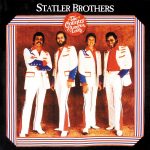The Beastmaster (1982).1

The Beastmaster (1982), directed by Don Coscarelli, stands as a notable entry in the genre of sword and sorcery fantasy. With its imaginative storyline, captivating visuals, and a blend of adventure and magic, the film has garnered a dedicated fan base over the years. Starring Marc Singer, Tanya Roberts, John Amos, and Rip Torn, The Beastmaster offers an intriguing exploration of fantasy elements and heroic quests, set in a mythical world filled with danger and wonder.

The Beastmaster follows the epic journey of Dar, played by Marc Singer, a young warrior with a unique connection to animals. The film begins with Dar as a child, witnessing the brutal murder of his parents by the evil sorcerer Maax (Rip Torn) and his minions. Dar is saved from certain death by a mystical force and is raised by a kindly farmer.
As an adult, Dar discovers his extraordinary ability to communicate with and control animals. He can command a variety of creatures, including a pair of falcons, a black tiger, and a group of ferrets, which play crucial roles in his quest. Dar learns of his true heritage and the prophecy that foretells his role in defeating Maax and restoring peace to the land.
The narrative follows Dar’s journey as he sets out to avenge his family and fulfill his destiny. Along the way, he encounters a diverse cast of characters, including Kiri (Tanya Roberts), a beautiful slave girl who becomes Dar’s love interest; Seth (John Amos), a skilled warrior and ally; and various mystical and villainous figures. The film’s storyline combines elements of classic fantasy with a personal tale of revenge and heroism.
The Beastmaster delves into several prominent themes typical of the sword and sorcery genre. One of the central themes is the hero’s journey, which is depicted through Dar’s transformation from a traumatized child to a powerful warrior. His quest for vengeance and justice reflects a classic narrative arc of personal growth and redemption.
The film also explores themes of destiny and prophecy. Dar’s connection to the mystical forces and his role in the prophecy underscore the idea of a predetermined fate and the impact of individual choices on the course of events. His bond with animals symbolizes a harmonious relationship between humanity and nature, highlighting the significance of understanding and respecting the natural world.
Additionally, The Beastmaster incorporates elements of good versus evil, as represented by Dar’s struggle against Maax. The film’s portrayal of Maax as a dark sorcerer with ambitions of power and destruction emphasizes the classic conflict between the forces of light and darkness.
The visual style of The Beastmaster is characterized by its use of practical effects and imaginative set designs. The film features a variety of fantastical creatures, including both animatronics and trained animals, which contribute to its sense of wonder and magic. The integration of these elements into the narrative enhances the film’s immersive quality and brings the fantasy world to life.
The cinematography, led by the film’s visual style, captures the grandeur and scale of the fantasy landscape. From the mystical forests to the ominous lairs of the villains, the film’s visual presentation creates a vivid and engaging setting for the story. The use of costumes, props, and set designs further enriches the film’s fantasy atmosphere.
The musical score, composed by the legendary music producer and composer, Christopher L. Stone, adds to the film’s dramatic and adventurous tone. The score complements the action sequences and emotional moments, enhancing the overall impact of the narrative.











